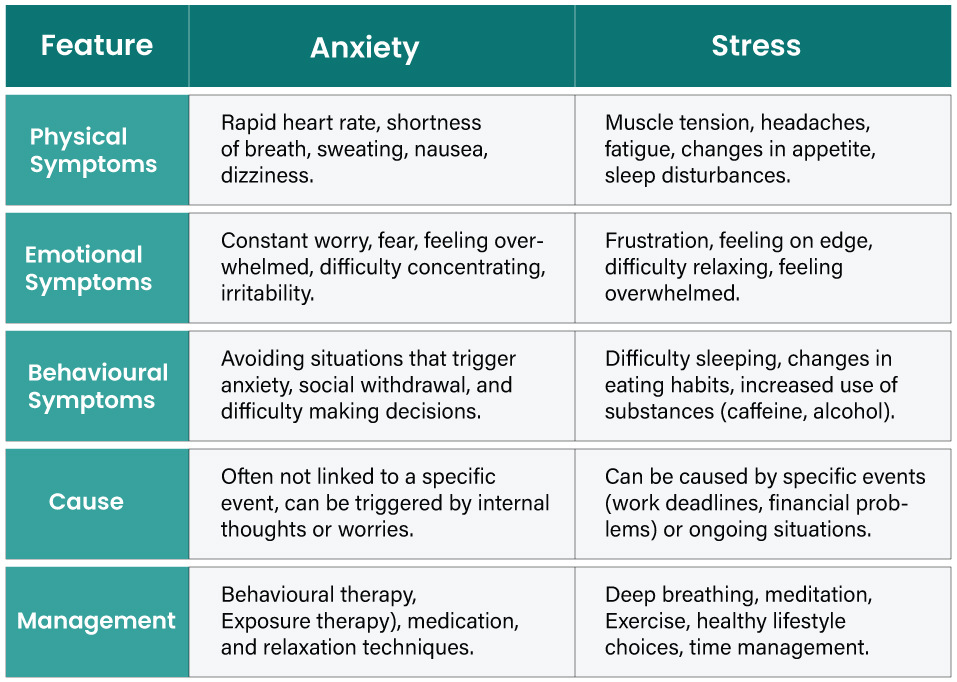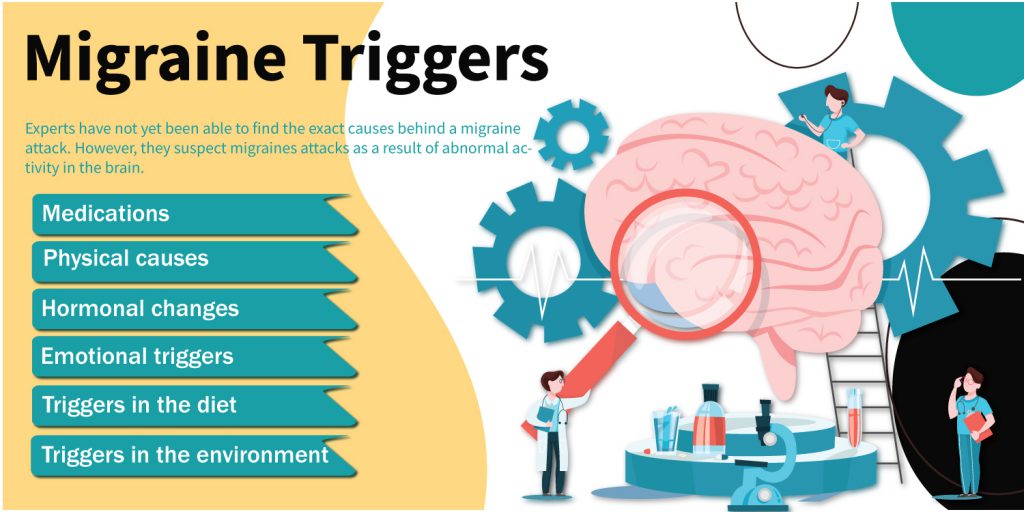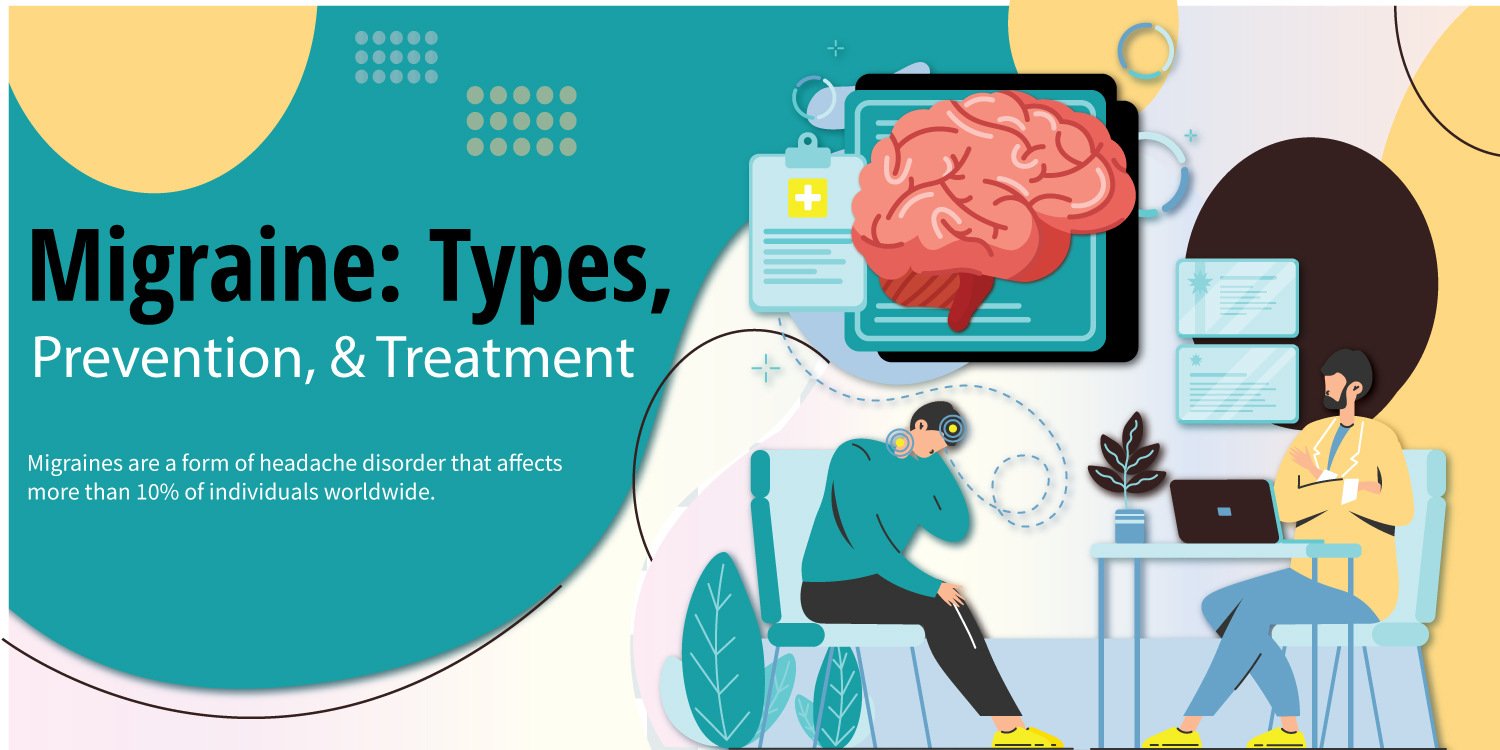Migraine: Types, Prevention, and Treatment
Migraine is a form of headache disorder that affects more than 10% of individuals worldwide. They are most common in those aged 20 to 50, and women are three times more likely than men to suffer from them.
Do you feel a bad pain in your head that gets worse when you move? If yes, you are one of the many people who have migraines each year. Migraines are not normal headaches. They are hard brain issues that can give you very bad symptoms. These symptoms can be feeling sick, strong head pain, eyes hurting from light, and vision problems.
This blog wants to help all people with migraines. It does not matter how long you have had migraines. We will give you facts and things you need to get control over your migraines and your life. We’ll go through the intricacies of these ailments and come out of them knowledgeable about migraines and prepared to respond.
Migraine Vs Headache
A migraine is not just a bad headache
A regular headache is usually caused by muscle or sinus tension, whereas a migraine is caused by the dilatation of blood vessels in the brain for no apparent reason.
Migraines are more severe, stay longer, and usually affect only one side of the head. Migraines rarely react to over-the-counter pain relievers like Tylenol or Advil. Auras, nausea, vomiting, sensitivity to sounds, and odours, and other sensory abnormalities are some of the additional symptoms that can accompany them.
A migraine attack can feel like lightning strikes in one region or it can be a severe, persistent discomfort all over or in specific areas.

What Type of Headache is a Migraine?
- Migraines aren’t just a one-time occurrence. If you continue to get severe headaches, you may be suffering from migraine.
- While simple pain-relievers are effective in normal headaches, the same is not true for migraine episodes. OTC pain relievers aren’t always effective.
- The majority of migraine episodes are unilateral. Migraines are frequently one-sided as a result of this. Another distinction is the level of the pain: a migraine headache causes strong, throbbing pain that makes it impossible to do daily t
- asks.
- Auras are visual abnormalities that might develop before the onset of a migraine attack. Only a few people, however, have this experience.
- Migraines are typically passed down through families. If one of your parents has them, you may inherit the genetic tendency for them.
Migraine Triggers
Experts have not yet been able to find the exact causes behind a migraine attack. However, they suspect migraine attacks as a result of abnormal activity in the brain.
The abnormal activity of the brain can be triggered by a range of triggers.

- Hormonal Changes: Due to fluctuating hormone levels, women may develop migraine symptoms during menstruation.
- Emotional Triggers: A migraine episode can be triggered by stress, despair, worry, excitement, or shock.
- Physical Causes: Migraines have been linked to fatigue and insufficient sleep, shoulder or neck stress, poor posture, and physical overexertion.
- Triggers in the Diet: Alcohol and coffee can aggravate migraines. Chocolate, cheese, citrus fruits, and foods containing the component tyramine are all foods that have this effect. Dehydration and irregular mealtimes have also been identified as potential factors.
- Medications: Some sleeping medicines, HRT treatments, and contraceptive pills have all been identified as probable triggers.
- Triggers in the Environment: Migraines can be triggered by flashing screens, strong odours, passive smoking, and loud noises. Stuffy rooms, temperature changes, and strong lights are all potential causes.
What are the Types of Migraines?
There are various forms of migraines, but not everyone will experience a ‘typical’ migraine, thus this information should only be used as a reference.
1. Migraine with Aura: Aura’ is a warning sign of a migraine. These are sensory disturbances that appear just before a migraine attack. These disturbances are characterized by flashes of light, blind spots, and other vision changes, as well as tingling in the hand or face.
2. Migraine without Aura: Migraine without aura is the most common kind of migraine. If you have a migraine without aura, you won’t get any warning signs that an episode is about to begin. You can get them as frequently as once a week or as infrequently as once a year.
3. Chronic Migraine: Chronic migraine is defined by the International Headache Society as 15 or more headaches in a month for three months or longer. Chronic headaches begin with fewer headache episodes and evolve into a more consistent headache pattern.
4. Migraine with Brainstem Aura: This type of migraine originates in the bottom region of the brain, known as the brainstem. They induce dizziness, double vision, and a lack of coordination, among other symptoms. It’s a rare type of migraine that affects roughly one out of every ten people.
5. Vestibular Migraine: A vestibular migraine is a neurological system condition that causes persistent dizziness (or vertigo) in people who have previously had migraine symptoms. Unlike traditional migraines, you may not experience a headache all of the time.
6. Menstrual Migraine: Menstrual migraines, also known as hormone headaches, strike just before or during a woman’s menstruation (up to two days before and three days after) and are aggravated by movement, light, or sound.
7. Abdominal Migraine: It is characterized by attacks of stomach pain and cramping. The symptoms are similar to cyclic vomiting syndrome. As an affected individual grows older, attacks of nausea, vomiting, or stomach discomfort may be replaced by migraine headaches.
Migraine in Children
For a long time, migraine was thought to primarily affect adults. Recent research, however, has debunked this notion. 7.7% of children under the age of three suffer from migraines, which can begin as early as age three.
Nearly one-fifth of teenagers suffer from migraines. Migraine in children and adolescents is frequently misdiagnosed and undertreated. In children and teenagers, it is the most common cause of headaches.
What are the Risk Factors for Migraine?
According to the American Migraine Foundation (AMF), migraine raises the risk of heart disease. Migraine has been linked to a 50% increase in the risk of stroke.
There is increased blood flow around the brain during migraine attacks. This anomaly can result in throbbing, pulsing pain as well as other health problems.
Adverse risks of untreated migraine on the health:
- Heart Disease.
- High Blood Pressure.
- Heart Abnormalities.
- Epilepsy.
- Depression
How are Migraines Treated?
There is currently no cure for migraines. Medications, on the other hand, can help prevent or stop them from happening, as well as keep your symptoms from getting worse. You can also avoid migraine triggers by altering your lifestyle and eating habits.
When to See a Doctor?
Seek medical help immediately if:
- You’re suffering from persistent headaches that won’t go away.
- You are using OTC pain relievers every day for severe headaches
- You experience three or more headaches per week, and
- you’re dizzy and have blurred vision.
Migraines are one of a kind. It’s not the same as having a regular headache. If you’re suffering from any of the symptoms listed below see a neurologist to rule out any other probable causes.
- One side of your head hurts
- Throbbing or pulsing pain
- Light and sound sensitivity
- Nausea and vomiting for no apparent reason
- Vision is hazy
Home Remedy for Migraine
Although a doctor’s diagnosis and treatment are necessary for migraine relief. You can try these simple home remedies to help control your symptoms:
- Locate a quiet and dimly lit space and lie down. To achieve numbness, apply a cold compress to your neck or forehead.
- Migraines might get worse when dehydrated. Drink some refreshing coconut water or chilled water.
- Put soothing essential oils in a diffuser like peppermint or lavender.
- Apply little pressure to certain facial and hand locations that are thought to reduce discomfort.
- Use relaxation methods to control stress, which can cause migraines. such as deep breathing exercises or meditation.
The Bottomline
We’ve tackled migraines from all angles – headaches vs. migraines, triggers, types, childhood migraines, risk factors, treatments, and when to see a doctor. Moreover, you can use multiple precautions that can save you from early migraine issues. Sometimes it can be hard to tell the difference between a headache and migraine. This is why most people with migraine are either under-treated or undiagnosed.
Additionally, understand what’s the best time to connect with Dr. If you are facing any symptoms of Migraine. Remember, your doctor is your partner in migraine management. With knowledge and action, you can regain control and live life on your terms, and migraines will disappear.
Visit Kayawell.com now for the best migraine treatment and advice from the best health experts in your area.
FAQs
1. What distinguishes a migraine from a headache?
To simplify the difference between migraine vs headache, we can call it a migraine something which comes with multiple symptoms and severe pain in the head in one dedicated portion of the brain. Whereas headaches can be slightly lesbian, and full and trigger different regions of the brain, especially the forehead and the side head. Additionally, migraine can create a massive impact for a longer period while headaches can be easily cured with a simple medication.
2. What typical causes are there for migraines?
There are multiple causes of migraine, but some of the major reasons that target them are stress, hormonal fluctuation, sleeping schedule fluctuation, and intake of migration-boosting supplements or food. Sometimes migraine can also be a major reason for the people who frequently use alcohol, caffeine, or outdated cheese.
3. How can I determine what specifically triggers my migraines?
A headache journal is an excellent tool for determining your triggers. Monitor your food, sleep habits, stress level, and menstrual cycle in addition to your migraine episodes. It might assist you in identifying trends and determining potential migraine triggers.
4. What kind of lifestyle adjustments might help ward off migraines?
Changing to a healthier lifestyle can greatly lower the frequency of migraine attacks. The three most important things are to manage stress by practising relaxation techniques like yoga or meditation, getting enough good sleep, and sticking to a regular sleep pattern. Frequent exercise can also be beneficial, provided that you stay away from any activities that can set off a migraine for you.
